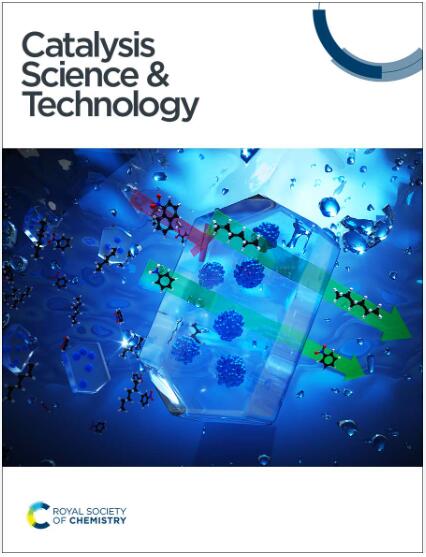A comprehensive mechanistic investigation of sustainable carbene N–H insertion catalyzed by engineered His-ligated heme proteins†
IF 4.2
3区 化学
Q2 CHEMISTRY, PHYSICAL
引用次数: 0
Abstract
Engineered heme proteins possess excellent biocatalytic carbene N–H insertion abilities for sustainable synthesis, and most of them have His as the Fe axial ligand. However, information on the basic reaction mechanisms is limited, and ground states of heme carbenes involved in the prior computational mechanistic studies are under debate. A comprehensive quantum chemical reaction pathway study was performed for the heme model with a His analogue as the axial ligand and carbene from the widely used precursor ethyl diazoacetate with aniline as the substrate. The ground state of this heme carbene was calculated by the high-level complete active space self-consistent field (CASSCF) approach, which shows a closed-shell singlet that is consistent with many experimental works. Based on this, DFT calculations of ten main reaction pathways were compared. Results showed that the most favorable pathway involved the initial formation of the metal-bound ylide, followed by a concerted rearrangement/dissociation transition state to form the free enol, which then underwent a water-assisted proton transfer process to yield the final N–H insertion product. This computational prediction was validated via new experimental data using His-ligated myoglobin variants with different types of carbenes. Overall, this is the first comprehensive computational mechanistic study of heme carbene N–H insertions, particularly for neutral His ligated heme proteins and the first high-level CASSCF confirmation of the ground state of the used heme carbene. The experimental results are also the first in this field. Overall, these results build a solid basis for the proposed reaction mechanism to facilitate future biocatalytic carbene N–H insertion studies.

工程his连接血红素蛋白催化可持续碳氮氢插入的综合机制研究。
工程血红素蛋白具有良好的生物催化碳氮氢插入能力,可持续合成,且多数以His为铁轴配体。然而,关于基本反应机制的信息是有限的,并且在先前的计算机制研究中涉及的血红素碳烯的基态还存在争议。对以His类似物为轴向配体的血红素模型和以苯胺为底物的重氮乙酸乙酯中的卡宾进行了全面的量子化学反应途径研究。用高阶完全活性空间自洽场(CASSCF)方法计算了该血红素碳的基态,基态为封闭壳态单重态,与许多实验结果一致。在此基础上,比较了10种主要反应途径的DFT计算结果。结果表明,最有利的途径是首先形成金属结合的烯酰,然后经过协调的重排/解离过渡态形成自由烯醇,然后经过水辅助质子转移过程产生最终的N-H插入产物。这一计算预测通过使用具有不同类型碳烯的his连接肌红蛋白变体的新实验数据得到了验证。总的来说,这是第一次对血红素碳烯N-H插入进行全面的计算机制研究,特别是对中性的he连接血红素蛋白,以及第一次对使用的血红素碳烯基态的高层次CASSCF确认。实验结果也是该领域的第一个。总的来说,这些结果为提出的反应机制奠定了坚实的基础,为未来生物催化碳氮氢插入研究提供了便利。
本文章由计算机程序翻译,如有差异,请以英文原文为准。
求助全文
约1分钟内获得全文
求助全文
来源期刊

Catalysis Science & Technology
CHEMISTRY, PHYSICAL-
CiteScore
8.70
自引率
6.00%
发文量
587
审稿时长
1.5 months
期刊介绍:
A multidisciplinary journal focusing on cutting edge research across all fundamental science and technological aspects of catalysis.
Editor-in-chief: Bert Weckhuysen
Impact factor: 5.0
Time to first decision (peer reviewed only): 31 days
 求助内容:
求助内容: 应助结果提醒方式:
应助结果提醒方式:


